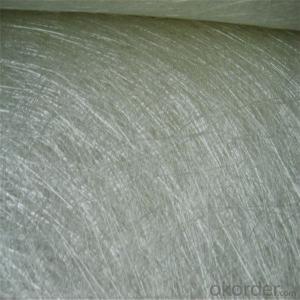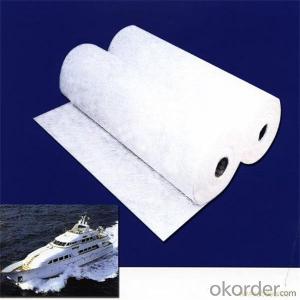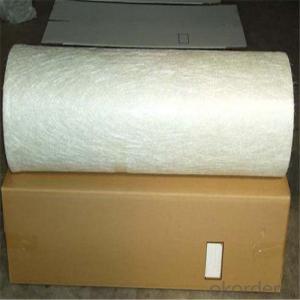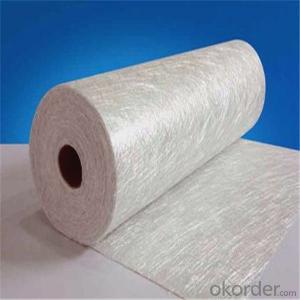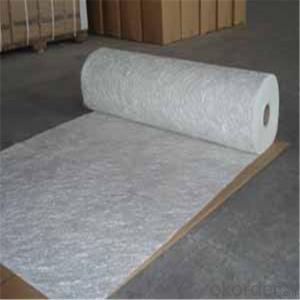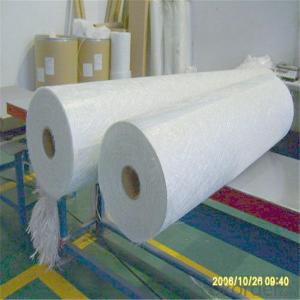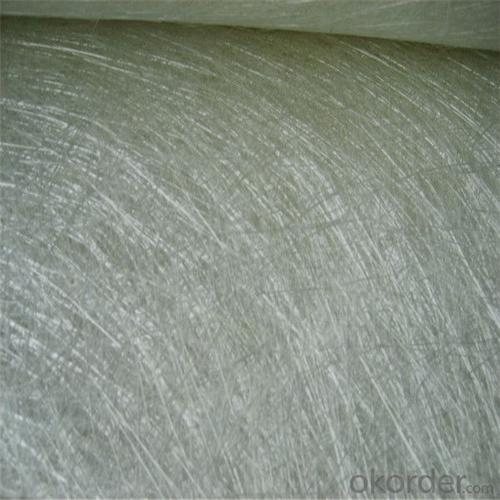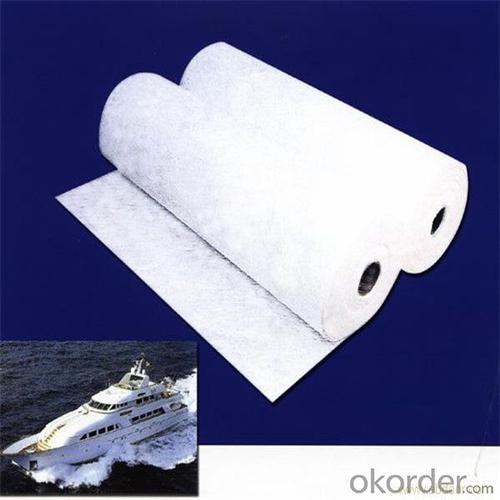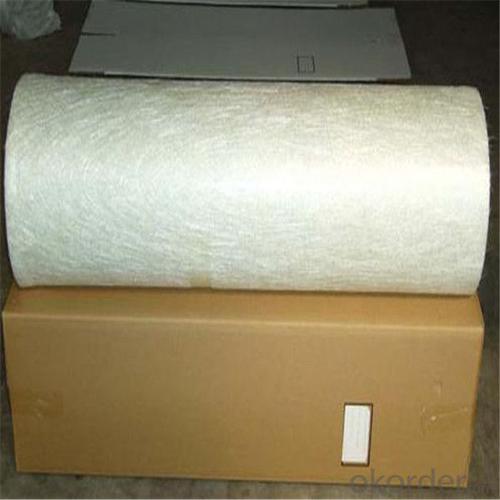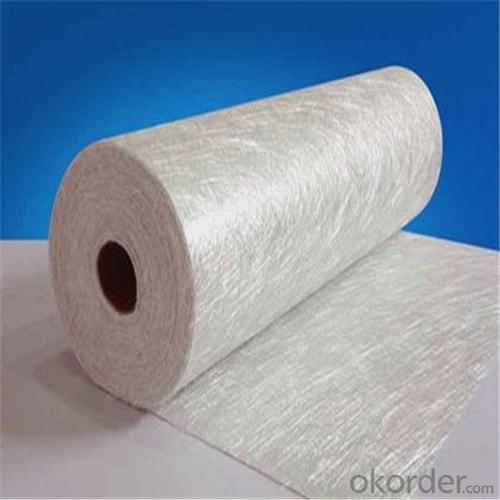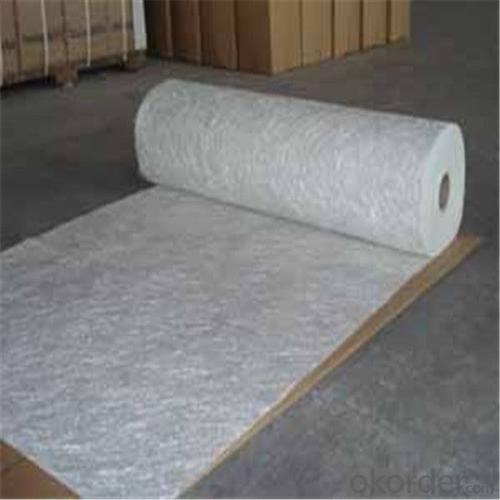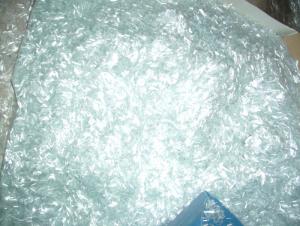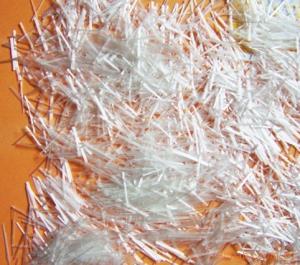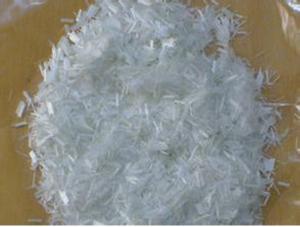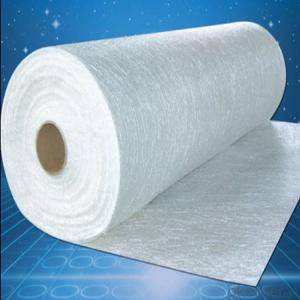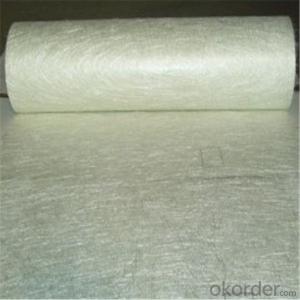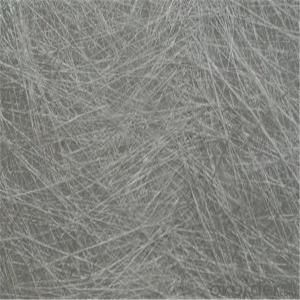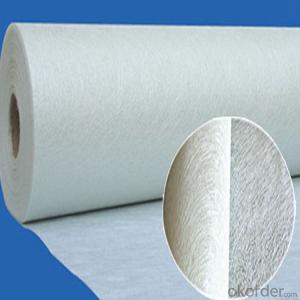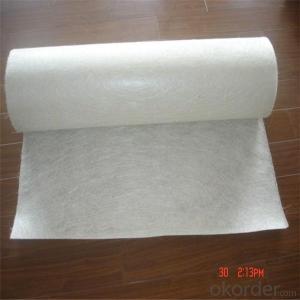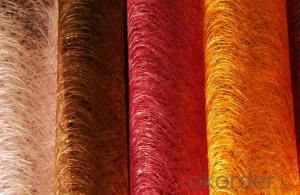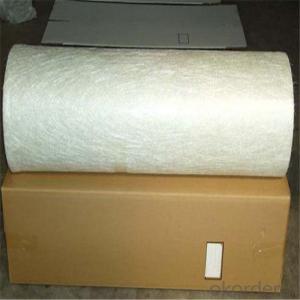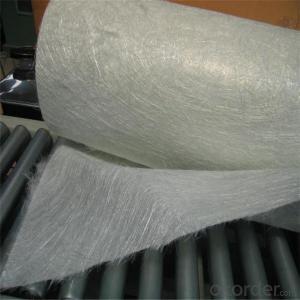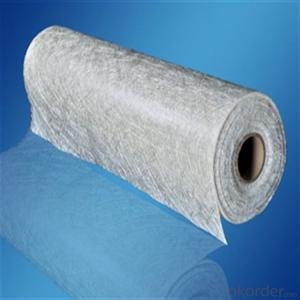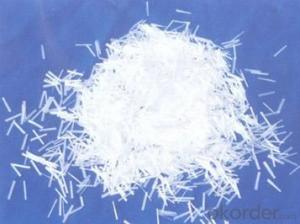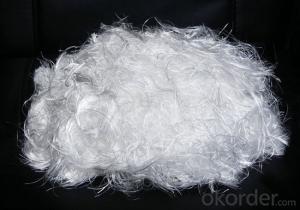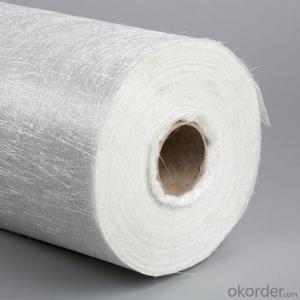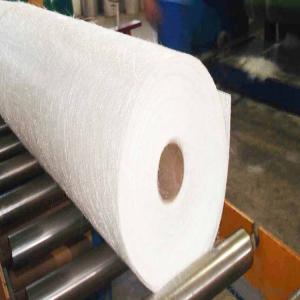Loose Chopped Fiberglass Strand / E/C-Glass Fiberglass Chopped Strand Mat
- Loading Port:
- Tianjin
- Payment Terms:
- TT OR LC
- Min Order Qty:
- 100 m.t.
- Supply Capability:
- 20000 m.t./month
OKorder Service Pledge
Quality Product, Order Online Tracking, Timely Delivery
OKorder Financial Service
Credit Rating, Credit Services, Credit Purchasing
You Might Also Like
Quick Details
| Technique: | Chopped Strand Fiberglass Mat (CSM) | Dimensions: | 450gsm | Mat Type: | Continuous Filament Mat |
| Fiberglass Type: | E-Glass | Softness: | softness | Place of Origin: | Jiangxi, China (Mainland) |
| Brand Name: | cnbm | Model Number: | 450gsm | color: | white |
| fiberglass type: | E glass | product: | e-glass powder chopped stand mats | binder: | powder or emulsion |
| width: | 1040 or 1270mm, as your requirement | weight: | 30 or 45kg/roll | paper tube diameter: | 90mm |
| outer diameter of roll: | 256mm | packing: | plastic film+carton box + pallet |
Packaging & Delivery
| Packaging Details: | plastic film+carton box + pallet |
| Delivery Detail: | 15-20days |
Specifications
1.e-glass powder chopped stand mats
2.binder:power or emulsion
3.width:1040mm or 1270mm
4.weight:450gsm
Picture
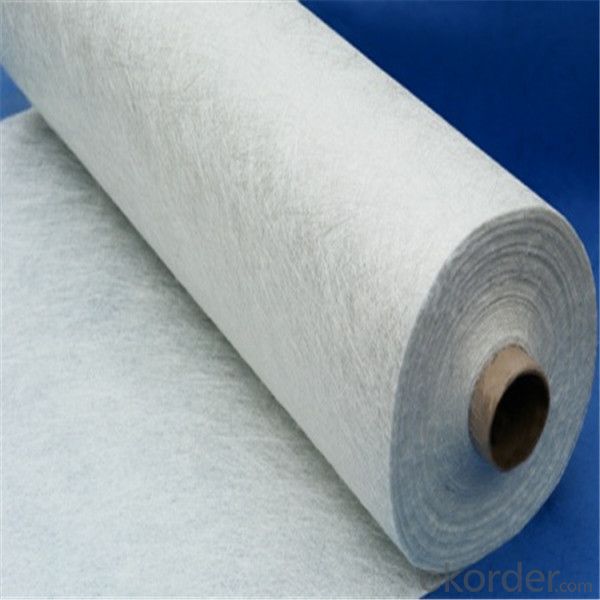
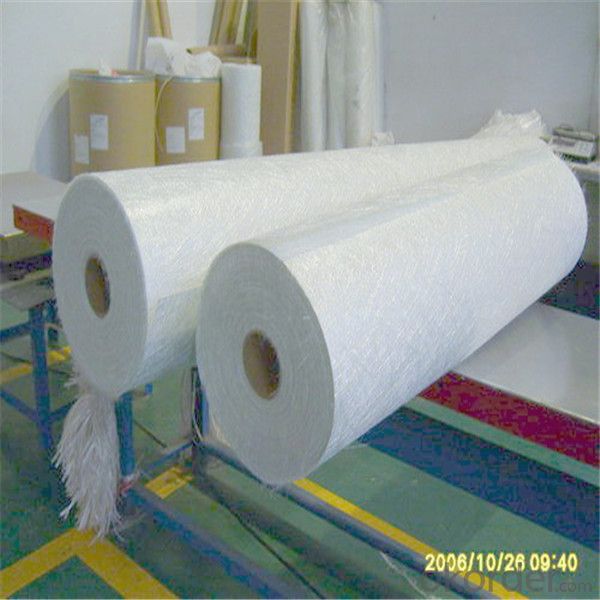
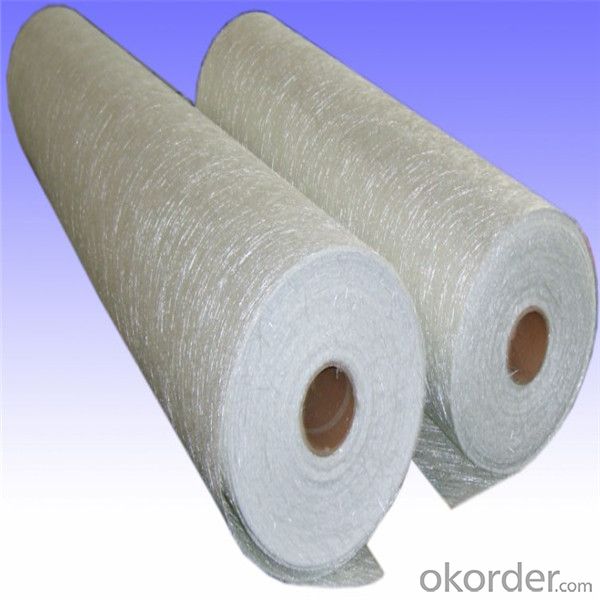
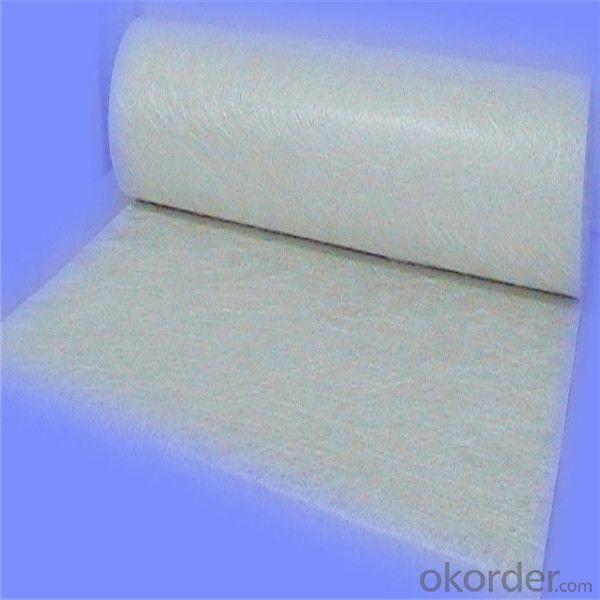
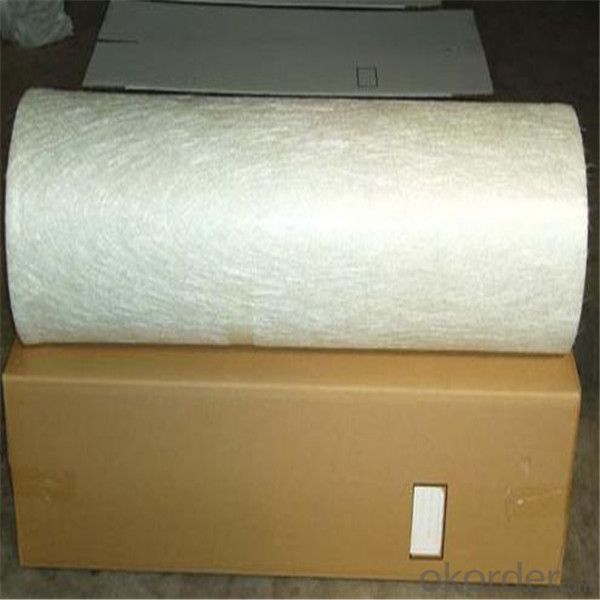
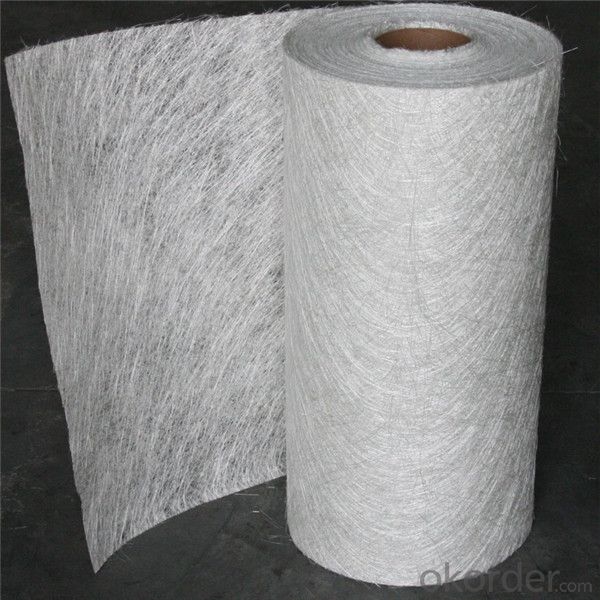
- Q: Can fiberglass chopped strand be used in construction?
- Yes, fiberglass chopped strand can be used in construction. It is commonly used as a reinforcement material in various construction applications such as concrete, roofing, insulation, and composite panels. It enhances the strength, durability, and fire resistance of the construction materials.
- Q: Is fiberglass chopped strand suitable for aerospace applications?
- Fiberglass chopped strand is generally unsuitable for aerospace applications due to its properties. Although fiberglass is widely used and cost-effective in industries such as automotive and construction, it may not meet the stringent requirements of aerospace applications. Aerospace applications demand materials that possess exceptional strength-to-weight ratios, high temperature resistance, low thermal expansion, excellent fatigue resistance, and other specific characteristics. These requirements often necessitate the utilization of advanced composite materials such as carbon fiber or aramid fiber reinforced polymers. Despite exhibiting good tensile strength and corrosion resistance, fiberglass chopped strand falls short in critical areas. Its relatively high density and limited thermal stability make it less suitable for aerospace applications, where lightweight materials that can endure extreme temperatures and harsh environments are vital. Furthermore, fiberglass chopped strand may face challenges in achieving precise engineering and tight tolerances, which are frequently required for aerospace components, due to its limited dimensional stability and potential for delamination. Consequently, while fiberglass chopped strand has numerous applications in various industries, it is typically not the preferred material for aerospace applications. Aerospace engineers and manufacturers favor advanced composite materials with superior performance characteristics to ensure the safety, reliability, and efficiency of aerospace systems.
- Q: How is fiberglass chopped strand produced?
- Fiberglass chopped strand is produced through a multi-step manufacturing process. It begins with the selection of high-quality glass fibers, which are typically made from silica sand, limestone, and soda ash. These raw materials are melted in a furnace at extremely high temperatures, reaching up to 1600 degrees Celsius. Once the glass has melted into a molten state, it is then extruded through tiny orifices in a device called a bushing. The molten glass is forced through these orifices, which have a specific diameter and shape, to form continuous filaments of glass. As the filaments emerge from the bushing, they are rapidly cooled using a stream of cool air. This process, known as attenuation, solidifies the molten glass into solid fibers. The filaments are then collected onto a high-speed rotating drum or a conveyor belt. The next step involves applying a sizing material to the fibers. The sizing is a chemical solution that helps to protect the fibers from abrasion and improve their compatibility with various resin systems. This sizing material also helps to bind the fibers together during subsequent processing. After the sizing is applied, the fibers are then chopped into short lengths using a mechanical cutting mechanism. This process, known as chopping, can be done using different methods, such as rotary cutters or reciprocating blades, depending on the desired length of the chopped strands. The chopped strands are then collected and packaged for distribution. They can be used in various applications, such as reinforcing thermoplastics, thermosetting resins, and construction materials, where their high strength and flexibility properties are highly advantageous. In summary, fiberglass chopped strand is produced by melting glass raw materials, extruding the molten glass into continuous filaments, cooling and collecting the filaments, applying sizing material, chopping them into short lengths, and finally packaging them for use in different industries.
- Q: Does fiberglass chopped strand have any water absorption properties?
- Yes, fiberglass chopped strand does have water absorption properties. Due to its porous nature, it can absorb water over time, leading to potential degradation or weakening of the material.
- Q: Does fiberglass chopped strand improve the wear resistance of composite materials?
- Fiberglass chopped strand has the ability to enhance the wear resistance of composite materials. Comprising of small, randomly oriented fibers, it is added to the composite matrix. These fibers augment the overall strength and durability of the composite, resulting in increased resistance to wear and tear. The remarkable tensile strength and mechanical properties of fiberglass chopped strand aid in distributing stress and impact forces evenly throughout the composite. This reduces the likelihood of surface damage and enhances its capacity to endure repeated use and abrasion. Moreover, the inclusion of fiberglass chopped strand can also bolster the stiffness and impact resistance of the composite, thereby further improving its wear resistance. Consequently, integrating fiberglass chopped strand into composite materials is an effective means of enhancing their wear resistance and prolonging their lifespan.
- Q: What are the flexural modulus properties of fiberglass chopped strand?
- The ability of fiberglass chopped strand to resist deformation when bent or flexed is referred to as its flexural modulus properties. Fiberglass chopped strand is renowned for its impressive flexural modulus, indicating that it can withstand bending forces and maintain its shape when under stress. This particular attribute is a result of the reinforcing fibers present in the fiberglass, which provide the material with strength and rigidity. The flexural modulus of fiberglass chopped strand can vary based on various factors, including the length and orientation of the fibers, the type of resin matrix employed, and the manufacturing process. Nevertheless, fiberglass chopped strand generally exhibits outstanding flexural modulus properties, making it a favored option for applications requiring structural strength and stiffness.
- Q: What are the typical testing standards for fiberglass chopped strand composites?
- Various mechanical, physical, and chemical tests are typically conducted to ensure the quality and performance of fiberglass chopped strand composites. Fiberglass chopped strand composites are subjected to several commonly used testing standards, including: 1. Tensile Strength Testing: This test determines the maximum amount of tensile stress that the composite can withstand before breaking. It provides information about the material's strength and its ability to endure pulling forces. 2. Flexural Strength Testing: This test assesses the composite's resistance to bending or flexing. It reveals insights into the structural integrity of the composite and its capacity to withstand external loads. 3. Impact Resistance Testing: This test evaluates the composite's ability to absorb and withstand sudden impacts or shocks. It helps in assessing the composite's durability and resistance to damage. 4. Water Absorption Testing: This test measures the amount of water absorbed by the composite within a specific timeframe. It helps determine the composite's resistance to moisture and potential degradation. 5. Fire Resistance Testing: This test examines how the composite reacts to fire and its ability to resist burning or the spread of flames. It is particularly significant in applications where fire safety is a concern. 6. Chemical Resistance Testing: This test assesses the composite's resistance to various chemicals, including acids, alkalis, and solvents. It helps determine the material's compatibility with different environments and potential exposure to chemicals. 7. Thermal Conductivity Testing: This test measures the composite's ability to conduct heat. It helps evaluate the thermal insulation properties of the composite and its suitability for applications where heat transfer is a consideration. 8. Dimensional Stability Testing: This test evaluates the composite's ability to maintain its shape and size under different temperature and humidity conditions. It helps determine the material's stability and suitability for specific applications. These represent some of the typical testing standards for fiberglass chopped strand composites. However, it is important to note that specific industries or applications may require additional or specialized testing to meet their unique needs and standards.
- Q: How is the dimensional stability of fiberglass chopped strand composites determined?
- Various testing methods and evaluations are employed to determine the dimensional stability of fiberglass chopped strand composites. One commonly utilized approach is the coefficient of thermal expansion (CTE) test, which quantifies the material's dimensional changes in response to temperature fluctuations. Another method involves conducting a moisture absorption test, which gauges the composite material's ability to absorb and retain moisture over time. This test is crucial in assessing the composite's stability in humid or wet environments, as moisture absorption can lead to dimensional alterations. Furthermore, the creep test is performed to evaluate the composite's resistance to deformation under continuous load over an extended duration. Through this test, the dimensional changes that occur when the material is subjected to constant stress can be measured. Moreover, dimensional stability can also be evaluated by examining the composite's mechanical properties, such as tensile strength, flexural strength, and impact resistance. These properties indirectly reflect the material's behavior under stress and aid in assessing its dimensional stability. In conclusion, a combination of these tests and evaluations is utilized to ascertain the dimensional stability of fiberglass chopped strand composites, ensuring their suitability for various applications.
- Q: Can fiberglass chopped strand be used in water treatment tanks?
- Yes, fiberglass chopped strand can be used in water treatment tanks. Fiberglass is resistant to corrosion and can withstand exposure to chemicals commonly found in water treatment processes. Additionally, it is lightweight, durable, and can be easily molded into various tank shapes and sizes.
- Q: How is fiberglass chopped strand used in the oil and gas industry?
- Fiberglass chopped strand is commonly used in the oil and gas industry for various applications due to its excellent mechanical and thermal properties. It is primarily used as a reinforcement material in the fabrication of composite components and structures. One of the main uses of fiberglass chopped strand in the oil and gas industry is for the manufacturing of corrosion-resistant pipes and tubing. These pipes are subjected to harsh environmental conditions, including the presence of corrosive substances such as oil, gas, and chemicals. By adding fiberglass chopped strand to the polymer matrix of the pipes, it significantly enhances their resistance to corrosion, extending their service life and reducing the need for frequent replacements. Moreover, fiberglass chopped strand is also utilized in the production of storage tanks, vessels, and containers used in the oil and gas industry. These components require high strength, durability, and resistance to extreme temperatures and pressures. By incorporating chopped strand into the composite matrix, it reinforces the structural integrity of these products, making them capable of withstanding the demanding conditions encountered in the oil and gas sector. Additionally, fiberglass chopped strand is employed in various other applications such as insulation materials, gaskets, seals, and electrical components within the oil and gas industry. Its thermal insulation properties make it an ideal choice for insulating pipelines and equipment, preventing heat loss or gain and maintaining the desired temperature during the transportation or processing of oil and gas. In summary, fiberglass chopped strand plays a crucial role in the oil and gas industry by reinforcing composite materials used in pipes, tanks, insulation, and other components. Its exceptional mechanical strength, corrosion resistance, and thermal insulation properties make it a preferred choice for enhancing the performance and durability of crucial infrastructure and equipment in this sector.
Send your message to us
Loose Chopped Fiberglass Strand / E/C-Glass Fiberglass Chopped Strand Mat
- Loading Port:
- Tianjin
- Payment Terms:
- TT OR LC
- Min Order Qty:
- 100 m.t.
- Supply Capability:
- 20000 m.t./month
OKorder Service Pledge
Quality Product, Order Online Tracking, Timely Delivery
OKorder Financial Service
Credit Rating, Credit Services, Credit Purchasing
Similar products
Hot products
Hot Searches
Related keywords
